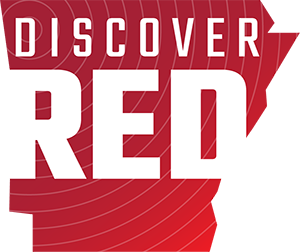Steve Stephenson, a research professor in the Department of Biological Sciences of the J. William Fulbright College of Arts and Sciences, recently returned from a two-week biodiversity survey on Christmas Island, an Australian territory about 220 miles south of the Indonesian island of Java. Stephenson is an expert on myxomycetes, a group of fungus-like organisms commonly referred to as slime molds.
Myxomycetes are neither plants nor animals, but they share the characteristics of both. They feed on microorganisms associated with dead plant material, and play an important role in vital ecosystem processes such as nutrient cycling.
Stephenson has traveled to all seven continents, and every major terrestrial ecosystem, to study them. He has authored or coauthored 11 books, and more than 360 book chapters and papers in peer-reviewed publications, many dealing with various aspects of the biology, distribution, ecology, and taxonomy of the myxomycetes. His work has been supported by nine grants from the National Geographic Society, including a $10,000 grant for his research on Christmas Island, the National Science Foundation and other funding agencies. Stephenson writes about his trip below:
Christmas Island (officially the territory of Christmas Island) is part of the country of Australia and received its name when the island was discovered on Christmas Day in 1643 by a passing English ship. The island was uninhabited at the time and only became settled in the late 19th century. Even today, the total population on the island is only about 2,000 individuals. Because of its geographic isolation and history of minimal human disturbance, there is an unusually high level of endemism among the flora and fauna. The majority (63 percent) of the island is included in Christmas Island National Park, most of which consists of extensive areas of tropical forest. I carried out virtually all of my field work was carried out in the park.
The tropical forest ecosystem on Christmas Island is unlike that of any similar forest elsewhere in the world. The reason for this is that high

Christmas Island Red Crabs migrate by the millions at the beginning of the rainy season. Photo by Steve Stephenson.
populations of giant land crabs occur on the island, and these crabs have a major impact on the plants and leaf litter on the forest floor. The crabs feed upon the plants and leaf litter, which results in much of the forest floor being relatively bare. Many of the myxomycetes found in tropical forests are associated with forest floor leaf litter, so this might be expected to have a signification effect upon their distribution and ecology. I won’t have much in the way of data from this trip until the fall because the majority of the myxomycetes will be isolated from samples in laboratory cultures. I have a few preliminary results from field-collected samples, but the only non-technical result is that, with one exception, they were collected from decaying wood. This would be expected, since there was very little forest floor litter.
Christmas Island is relatively small (just over 50 square miles), but it is approximately the same size as subantarctic Macquarie Island (another territory of Australia), where I spent four months in 1995. One objective of my research is to compare and contrast the assemblages of myxomycetes associated with two islands of similar size, with one located in the tropics and the other in the south polar region. I believe these islands will have very few species of myxomycetes in common.






You must be logged in to post a comment.